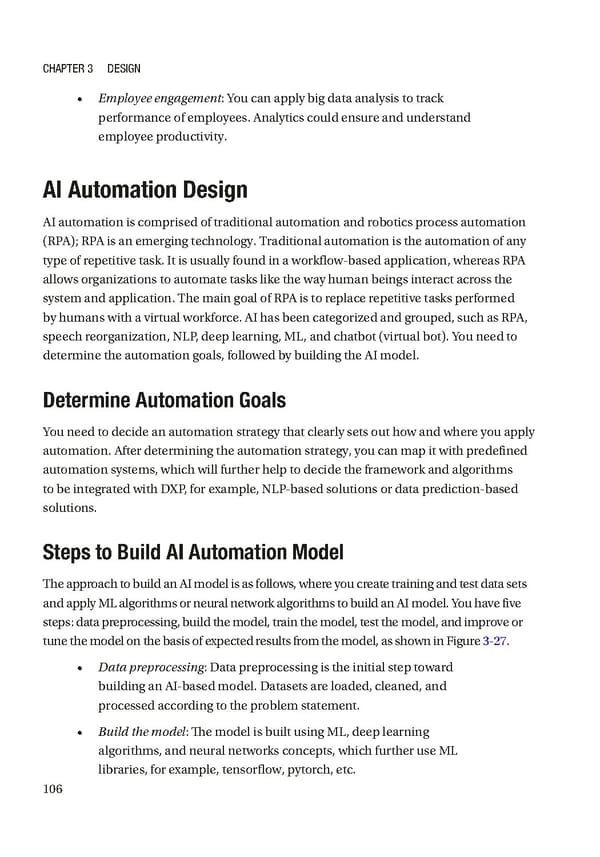Chapter 3 Design • Employee engagement: You can apply big data analysis to track performance of employees. Analytics could ensure and understand employee productivity. AI Automation Design AI automation is comprised of traditional automation and robotics process automation (RPA); RPA is an emerging technology. Traditional automation is the automation of any type of repetitive task. It is usually found in a workflow-based application, whereas RPA allows organizations to automate tasks like the way human beings interact across the system and application. The main goal of RPA is to replace repetitive tasks performed by humans with a virtual workforce. AI has been categorized and grouped, such as RPA, speech reorganization, NLP, deep learning, ML, and chatbot (virtual bot). You need to determine the automation goals, followed by building the AI model. Determine Automation Goals You need to decide an automation strategy that clearly sets out how and where you apply automation. After determining the automation strategy, you can map it with predefined automation systems, which will further help to decide the framework and algorithms to be integrated with DXP, for example, NLP-based solutions or data prediction-based solutions. Steps to Build AI Automation Model The approach to build an AI model is as follows, where you create training and test data sets and apply ML algorithms or neural network algorithms to build an AI model. You have five steps: data preprocessing, build the model, train the model, test the model, and improve or tune the model on the basis of expected results from the model, as shown in Figure 3-27. • Data preprocessing: Data preprocessing is the initial step toward building an AI-based model. Datasets are loaded, cleaned, and processed according to the problem statement. • Build the model: The model is built using ML, deep learning algorithms, and neural networks concepts, which further use ML libraries, for example, tensorflow, pytorch, etc. 106
 Building Digital Experience Platforms Page 125 Page 127
Building Digital Experience Platforms Page 125 Page 127